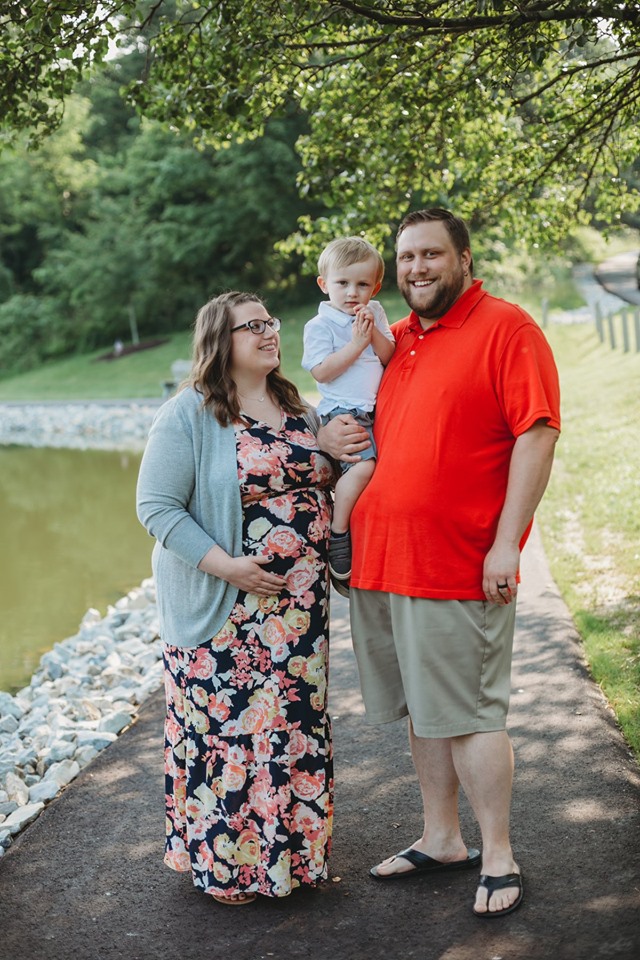
Originally published in the Ohio Capitol Journal on December 13, 2019
What do you think of when you hear paid family leave? Much of this week’s news coverage has highlighted policies that help new parents take leave to welcome a new baby. It makes sense. The U.S. remains the only industrialized country not to guarantee new parents paid leave, and, in fact, one in four new moms return to work less than two weeks after giving birth. But the lack of paid parental leave is only one part of the vast caregiving crisis for millions of families in our country.
We all need paid family and medical leave
Nearly every Ohioan will need paid family and medical leave at one point in their life — or more. The need could come following the birth or adoption of a new child, caring for an aging parent who recently had a stroke or has been diagnosed with Alzheimer’s, or for their own medical crisis like battling cancer. Ohioans face these difficult crises every single day and advocates, like myself, hear from people who are having to choose between receiving the income they need and caring for the family they love. It doesn’t have to be this way.
When it comes to paid family leave, caregiving and personal medical leave are often left out of the conversation. This problem isn’t small. In Ohio, nearly one in four workers are over the age of 55, and in less than 15 years, the share of our state’s population age 65 and older will grow by nearly 40 percent according to the U.S. Census Bureau. Older working people are more likely to experience serious medical conditions that often require unpaid care from their family members.
The Family and Medical Leave Act (FMLA), the law that allows many people in the U.S. to take unpaid leave, is used by tens of millions of people each year. Nearly 75 percent of FMLA leave is actually taken to care for a loved one or for peoples’ own injuries and illnesses.
Why we need paid family and medical leave
Nobody can predict when their mom will have a stroke, if their child will get cancer or if they will suffer a heart attack that requires longer recovery time. But these things happen. And right now, many families are left hanging out on a limb with medical bills piling up, making the impossible choice between having to go to work or caring for the family they love when a crisis hits. Any paid leave policy must include caregiving and personal medical leave. The need is too great.
The appetite for paid family and medical leave is growing on Capitol Hill. Just this week, Washington reached a new bipartisan agreement. The agreement, which is likely to pass, adds a provision that gives federal employees who are new parents 12 weeks of paid leave to care for a newborn or adopted child. The FAMILY Act, the Democratic flagship paid leave bill in Congress that includes all three types of leave — parental, caregiving, and personal medical — seems to be attracting new cosponsors every week from both sides of the aisle. And Republicans are jumping on the bandwagon, introducing varieties of parental leave-only bills.
We’ve turned a corner in the paid family and medical leave fight. No longer does it seem a question of if we need a national policy, but a question of when and how. Ohio, the undeniable battleground state and heart of the nation, will play a critical role in defining how this plays out in Congress. Both of our U.S. Senators (Sen. Portman, a Republican, and Sen. Brown, a Democrat) are members of the Senate Finance Committee, which will help shape the policy that goes to the full Congress for a vote. Sens. Portman and Brown need to hear loud and clear that caregiving and personal medical leave must be a part of any paid leave bill because millions of Ohioans need this.
The policy
My organization, PL+US: Paid Leave for the U.S., recently conducted a report that laid out what a national paid family and medical leave policy would look like if it was designed by doctors and experts based on what families actually need and science tells us. The science is clear, we need policies that give families the flexibility to take up to six months of paid leave for a new child or to care for themselves or a family member.
We also need to make sure these policies support people who really need them, particularly low wage working people who need to make sure that their jobs will be protected and they will get their whole paycheck while they’re caring for family. Funding this policy through a social insurance model, where everyone pays a little so everyone can get the support when they need it is a proven and successful model to follow. Lastly, everyone means everyone, and that must include paid leave for caregiving and personal medical leave.
Everybody deserves to be with their family when it matters without fear of losing their job or their paycheck — whether it’s for a life-changing moment like welcoming a child, to care for a loved one who is critically ill, or to handle their own medical crisis. These are life’s big moments — and they happen to all of us. It’s past time for the U.S. to catch up with the rest of the world and modernize our paid family and medical leave policy to reflect the needs of families throughout Ohio and across the U.S.



